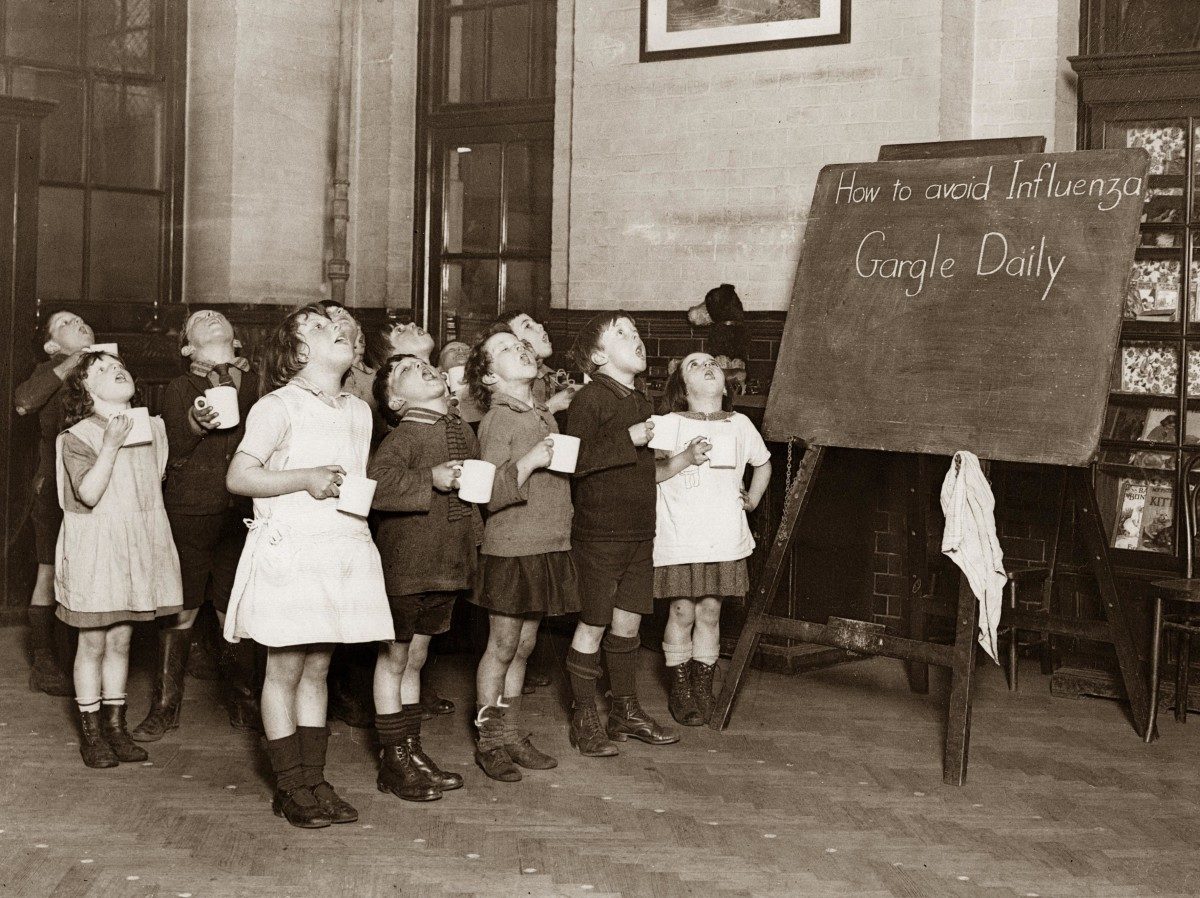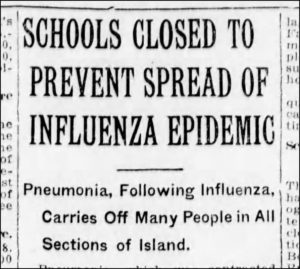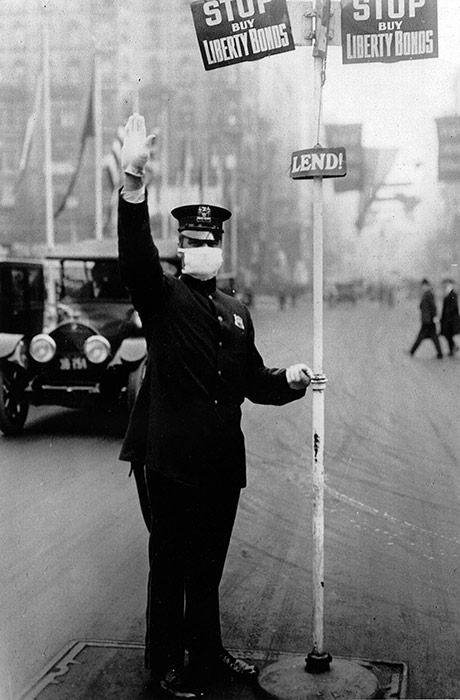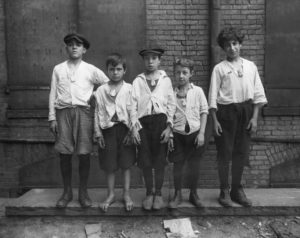THE NYC “CORONAVIRUS” OF 1918 (1918)

Brownstone Detectives investigates the history of its clients’ homes.
The story you are about to read was composed from research conducted in the course of one of those investigations.
********************************************************************************************************************************
In 1918, the world was facing a pandemic. Influenza was on the march and it was killing more people than World War I ever could.
Soldiers were dying before they could reach the front. School children were losing their lives at alarming rates.

According to History.com, the term influenza became commonplace to describe the disease, at least in Britain, in the mid-1700s. At the time, it was thought that the influence of the cold (influenza di freddo), along with astrological influences or the conjunction of stars and planets (influenza di stelle), caused the disease.
In 1892, Dr. Richard Pfeiffer isolated an unknown bacterium from the sputum of his sickest flu patients, and he concluded that the bacteria caused influenza. He called it Pfeiffer’s bacillus, or Haemophilus influenzae.
Scientists later discovered that H. influenzae causes many types of infections—including pneumonia and meningitis—but not influenza.
Researchers finally isolated the virus that causes flu from pigs in 1931, and from humans in 1933.
THE SPANISH FLU IN NYC

The flu pandemic of 1918 is sometimes known as the “mother of all pandemics.” The so-called Spanish flu pandemic was the deadliest in history, affecting one-third of the world’s population and killing up to 50 million people.
According to the National Center for Biotechnology Information, New York City emerged, in 1919, from the three waves of the influenza pandemic (September 1918 to February 1919) officially recording approximately 30,000 deaths out of a population of roughly 5.6 million due to influenza or pneumonia, 21,000 of them during the second fall wave.
NEW YORK CITY SCHOOLS MEET THE EPIDEMIC
Throughout that wave, the school system of New York was responding to the epidemic in scattershot ways. There were increasing calls from parents for the city to do something about the children who were becoming sick from the virus, many of whom would later die. It was only when those numbers began to skyrocket, however, that the City announced that the schools would be closed until further notice.

Back in 1918, however, school closures were even warned against at first as, in one case, a doctor argued that children were better off in school than at home. A Dr. Ettinger, Superintendent at the Board of Health in New York City, had a circular printed for distribution to every student in the high schools, informing them of the symptoms of influenza and how to treat it in its first stages. But the doctor warned against taking children out of school believing they were better off in classes, “especially in congested districts.”
Eventually, though, as the hospitals became overcrowded the schools in the city were closed until it appeared the flu began to pass, and the numbers of deaths began to go down.
———————————————————————————————————————–
 Brownstone Detectives is a property research agency whose mission is to document and save the histories of our clients’ old houses. From this historical research, we produce our celebrated House History Books. Each book is fully cited, featuring detailed narratives and colorful graphics, and is designed to bring the history of any house to life. Contact us today to begin discovering the history of your home.
Brownstone Detectives is a property research agency whose mission is to document and save the histories of our clients’ old houses. From this historical research, we produce our celebrated House History Books. Each book is fully cited, featuring detailed narratives and colorful graphics, and is designed to bring the history of any house to life. Contact us today to begin discovering the history of your home.